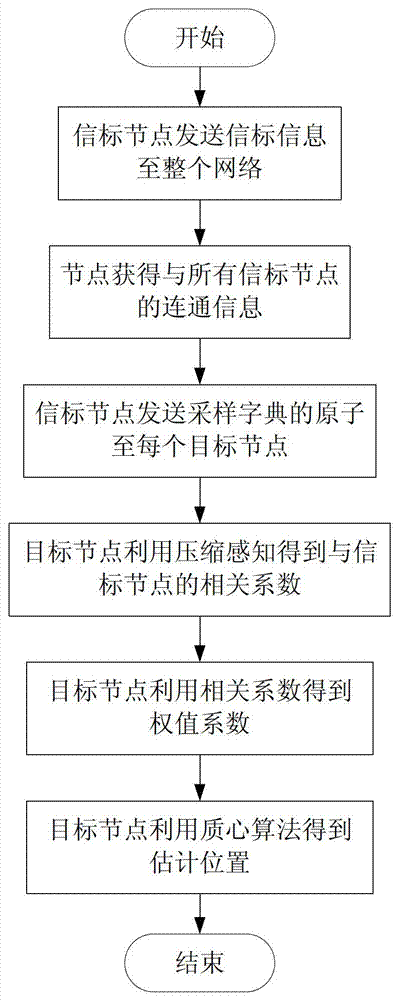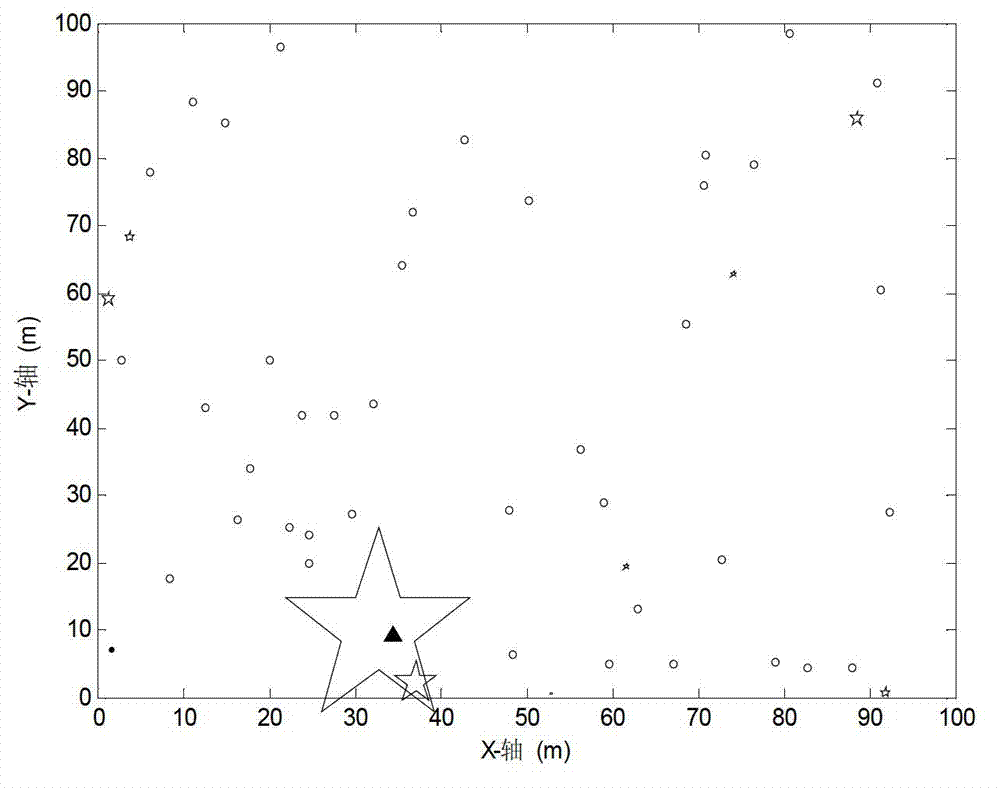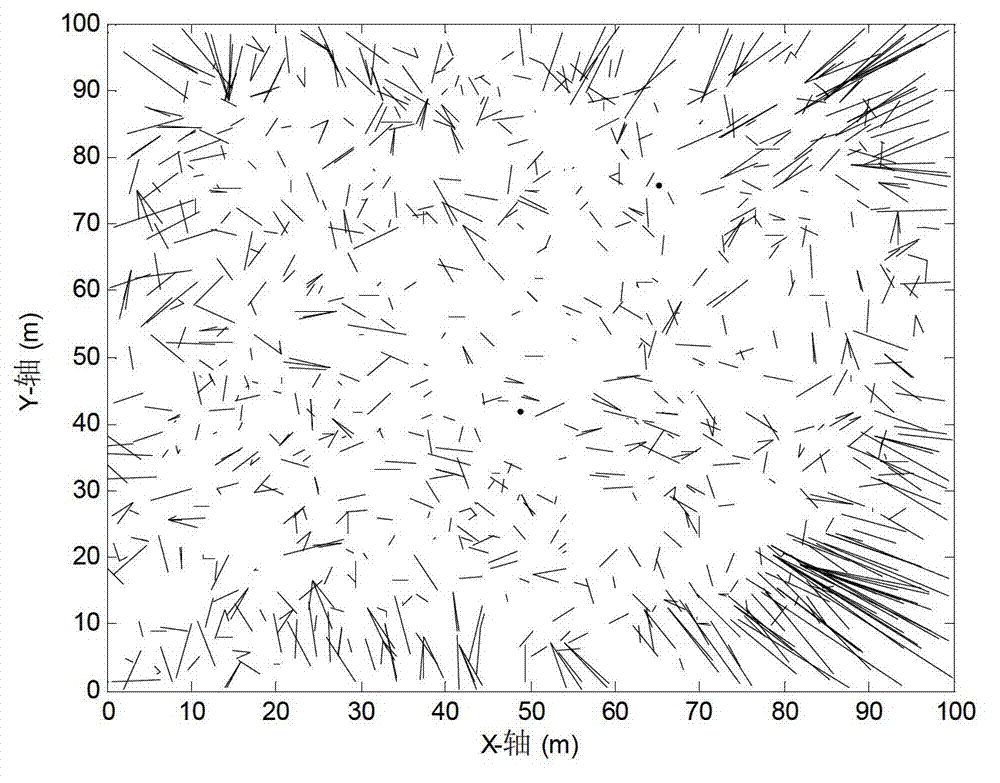Wireless sensor network node positioning method based on compressed sensing theory
A wireless sensor and network node technology, applied in wireless communication, electrical components, etc., can solve the problems of high consumption of head beacon nodes, affecting the accuracy of positioning, and the impact of classification accuracy, so as to reduce communication consumption, reduce node costs, The effect of equalizing energy consumption
- Summary
- Abstract
- Description
- Claims
- Application Information
AI Technical Summary
Problems solved by technology
Method used
Image
Examples
Embodiment Construction
[0036] The present invention is described in detail below in conjunction with accompanying drawing example:
[0037] Concrete realization steps of the present invention are:
[0038] 1. Assume that there are a total of N nodes in the network, including N-k target nodes and k beacon nodes. The connectivity information of the network is obtained by using a typical flooding diffusion protocol. First, each beacon node sends a message Hello{ID, h} to its neighbor nodes, ID includes the label of the beacon node and geographic location information, h is the number of hops, and its initial value is 1. Then, the receiving node receives the Hello message and records it, and obtains the hop number from the receiving node to the beacon node, and then adds 1 to the hop value and forwards it to the neighbor node, so that the jth node in the network to the beacon node can be obtained The connectivity information H j =(h(S j ,S 1 ),…,h(S j ,S i ),…,h(S j ,S k ))∈R k×1 and the positi...
PUM
 Login to View More
Login to View More Abstract
Description
Claims
Application Information
 Login to View More
Login to View More - R&D
- Intellectual Property
- Life Sciences
- Materials
- Tech Scout
- Unparalleled Data Quality
- Higher Quality Content
- 60% Fewer Hallucinations
Browse by: Latest US Patents, China's latest patents, Technical Efficacy Thesaurus, Application Domain, Technology Topic, Popular Technical Reports.
© 2025 PatSnap. All rights reserved.Legal|Privacy policy|Modern Slavery Act Transparency Statement|Sitemap|About US| Contact US: help@patsnap.com



